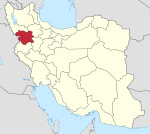The Androphagi were an ancient Scythian tribe whose existence was recorded by ancient Greco-Roman authors.

The Scythians or Scyths in composition) and sometimes also referred to as the Pontic Scythians, were an ancient Eastern Iranic equestrian nomadic people who had migrated during the 9th to 8th centuries BC from Central Asia to the Pontic Steppe in modern-day Ukraine and Southern Russia, where they remained established from the 7th century BC until the 3rd century BC.

The Neuri or Navari were an ancient Slavic or Baltic people whose existence was recorded by ancient Graeco-Roman authors.

The Agathyrsi were an ancient people belonging to the Scythian cultures who lived in the Transylvanian Plateau, in the region that later became Dacia. The Agathyrsi are largely known from Herodotus of Halicarnassus's description of them in the 5th century BC.

Cyaxares was the third king of the Medes. He ascended to the throne in 625 BCE, after his father Phraortes lost his life in a battle against the Assyrians.

Saqqez is a city in the Central District of Saqqez County, Kurdistan province, Iran, serving as capital of both the county and the district.
The Massagetae or Massageteans, also known as Sakā tigraxaudā or Orthocorybantians, were an ancient Eastern Iranian Saka people who inhabited the steppes of Central Asia and were part of the wider Scythian cultures. The Massagetae rose to power in the 8th to 7th centuries BCE, when they started a series of events with wide-reaching consequences by expelling the Scythians out of Central Asia and into the Caucasian and Pontic Steppes. The Massagetae are most famous for their queen Tomyris's alleged defeating and killing of Cyrus, the founder of the Persian Achaemenid Empire.
The Melanchlaeni, also known as the Saudaratae, were an ancient Scythian tribe whose existence was recorded by ancient Graeco-Roman authors.
Teušpâ was an early 7th-century BC king of the Cimmerians.
Madyes was a Scythian king who ruled during the period of the Scythian presence in West Asia in the 7th century BCE.
The Budini were an ancient Scythian tribe whose existence was recorded by ancient Graeco-Roman authors.

Media is a region of north-western Iran, best known for having been the political and cultural base of the Medes. During the Achaemenid period, it comprised present-day Iranian Azerbaijan, Iranian Kurdistan and western Tabaristan. As a satrapy under Achaemenid rule, it would eventually encompass a wider region, stretching to southern Dagestan in the north. However, after the wars of Alexander the Great, the northern parts were separated due to the Partition of Babylon and became known as Atropatene, while the remaining region became known as Lesser Media.
The Gelonians or Geloni were an ancient Scythian people whose existence was recorded by ancient Graeco-Roman authors.

Scythia or Scythica was a geographic region defined in the ancient Graeco-Roman world that encompassed the Pontic–Caspian steppe. It was inhabited by Scythians, an ancient Eastern Iranian equestrian nomadic people.
Dugdammî or Tugdammî, also known by the Greeks as Lygdamis and Dygdamis, was a Cimmerian king of the mid-seventh century BC.
Sandakshatru or Sandakuru was the last known Cimmerian king.
The Treres were a Thracian tribe, of whom a part invaded Anatolia in the 7th century BCE, while another part lived in Thrace and Illyria.
Bartatua or Protothyes was a Scythian king who ruled during the period of the Scythian presence in Western Asia in the 7th century BCE.
Išpakāya was a Scythian king who ruled during the period of the Scythian presence in Western Asia in the 7th century BCE.
The names of the Scythians are a topic of interest for classicists and linguists. The Scythians were an Iranic people best known for dominating much of the Pontic steppe from about 700 BC to 400 BC. The name of the Scythians is believed to be of Indo-European origin and to have meant "archer". The Scythians gave their name to the region of Scythia. The Persians referred to all Iranic nomads of the steppes, including the Scythians, as Sakas. Some modern scholars apply the name Scythians to all peoples of the Scytho-Siberian world, but this terminology is controversial.















